Bag Harbour, Haida Gwaii, 6-JUN-2018 – It’s been raining in Haida Gwaii. As far as I can tell that’s all it does. The wind is variable: it might be good sailing wind, or 40-50 knots, which sends us and every other boat to find a safe harbor and hunker down. While in the safe harbor we use the dinghy when there are breaks in the wind.
When we first bought Caro Babbo I hadn’t considered a water maker. All the books and long-distance sailors I’d read talked about two things: a mister for rinsing after washing in salt water (everyone washed in their cockpits after stripping off their shorts or bathing suits – they don’t sail the waters we sail in*), and collecting rain water.
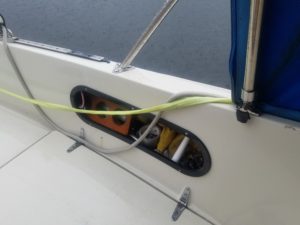
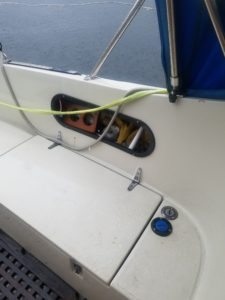
After a month in Haida Gwaii’s rain, I learned that solar panels were not going to drive the water maker and when we do move, we sail – so no power from the engine. (A tow-generator is under consideration.)
While Jennifer slept one morning, I listened to the drumming rain and remembered the water collection scheme. I decided to revisit this plan and perhaps implement it in Juneau while Jennifer is in Atlanta, and write a blog piece about it.
I needed a picture to supplement the blog piece.
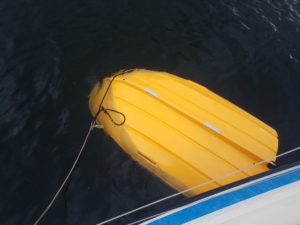
This is our life raft, it is not supposed to sink.
If you have been following this year’s blog stream, you know that it is the season of leaks.
Flipping didn’t concern me as much as the watertight compartments filling. It has been blowing 20 knots with 40 knots in gusts alternating 90 degrees between Southeast and Southwest. But sinking?
We called the Portland Pudgy people on the sat phone – we’re getting our monies worth from Iridium. Debby, who answered the phone, wasn’t going anywhere near this and asked me to call back in two hours when Dave returned.
Once on the phone it became clear that Dave is an engineer not a sales and marketing guy, nor a customer support person. He did little in the beginning to calm me other than to tell me that this shouldn’t have happened.
Over the course of a bunch of phone calls, which included reading the HIN (Hull Identification Number) to him, Dave told me that the O-rings he gets with the watertight hatch covers are too hard and will leak. They now make their own. He’d send me a set for free.

By the next day I figured out that if the towing bridle was pulled hard at 90-degrees to the length of the dinghy. The downward force from the far-side attachment point might dip that side’s gunwale.
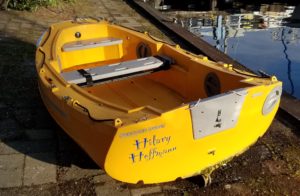
We stowed the oars under the seat, when we left the tied to Caro Babbo overnight. When the dinghy flipped upside down, the oars floated away.
To make a perfect trifecta, when the dinghy was tied along side two days later, our holding tank overflowed effluent through the vent directly into the dinghy.
Portland Pudgy is shipping the deep lee boards, the oars, O-rings and gaskets to Ketchikan. The parts are $318, shipping, $108.
Using the dinghy with only the outboard scares the willies out of me. If the engine dies there’s no way to get to shore or back to Caro Babbo. So, we’ve only done it twice, both times when people were around watching us.
Has my faith in the Pudgy disappeared? No. Dave pointed out that if this had been an inflatable life raft in 40 knot gusts it would be airborne if no one was inside. And, I have read, there is close to 30% chance an inflatable life raft won’t inflate.
We’ve learned that the Pudgy isn’t invincible and needs inspection and maintenance. Dave suggested putting four or five inches of water into the watertight compartment, turning the dinghy over and looking for places where water comes out of the boat, then sealing or repairing any leaks that I find.
It is the trip of water: rainwater, fresh, salt, water-maker water, and black water.
* The same thing apparently from the northern European and Scandinavian sailors I correspond with who want to know why we don’t shower in the cockpit. A picture on floating ice next to the boat made the point, but a family that wanted to trade boats with us rescinded their offer.

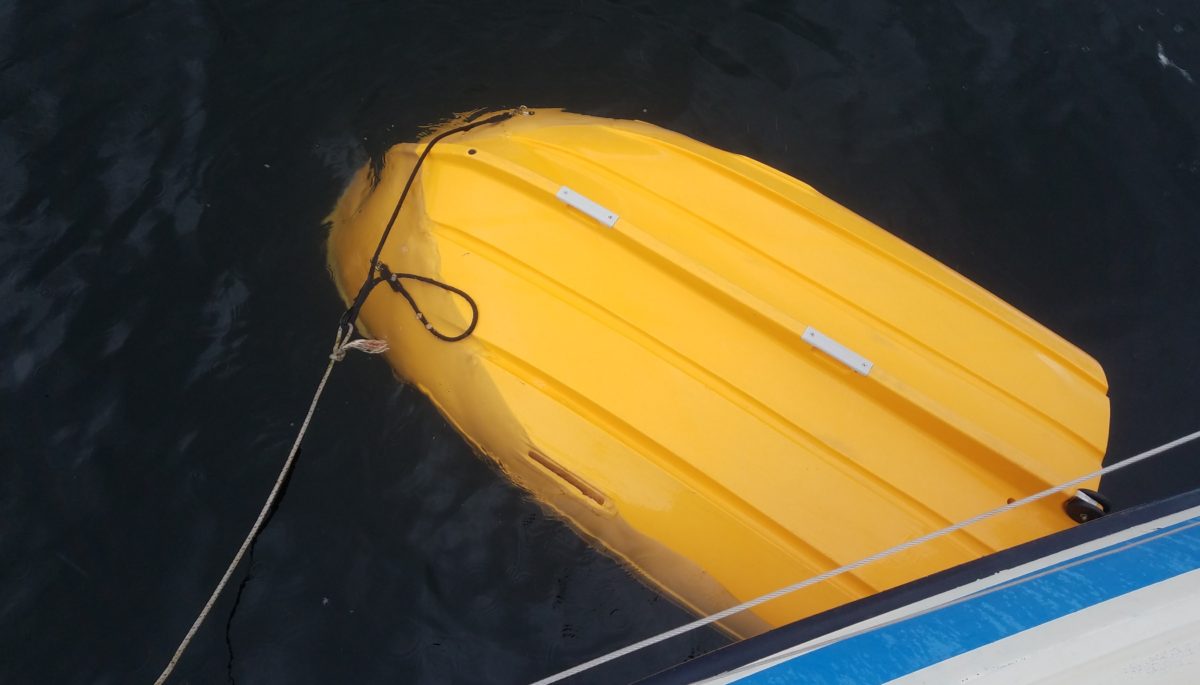
Leaks in your dinghy and no oars if the outboard dies sounds a little like a sky diver who discovers his chute won’t open after he’s jumped out of the plane. Too bad that Portland Pudgy didn’t design straps or clips to contain the oars when they’re stored.
There is a place to store the oars inside the hull through the aft hatch opening (the one the leaks), but generally, overnight we wedge them under the seats.
They don’t make straps for the lee boards, even though the recommend storing them under the seats. I’ll be in Juneau for a while, while Jennifer is in Atlanta for a week. I’ll make some straps for the lee boards and for the rudder, which is recommended to be stored under the aft seat.